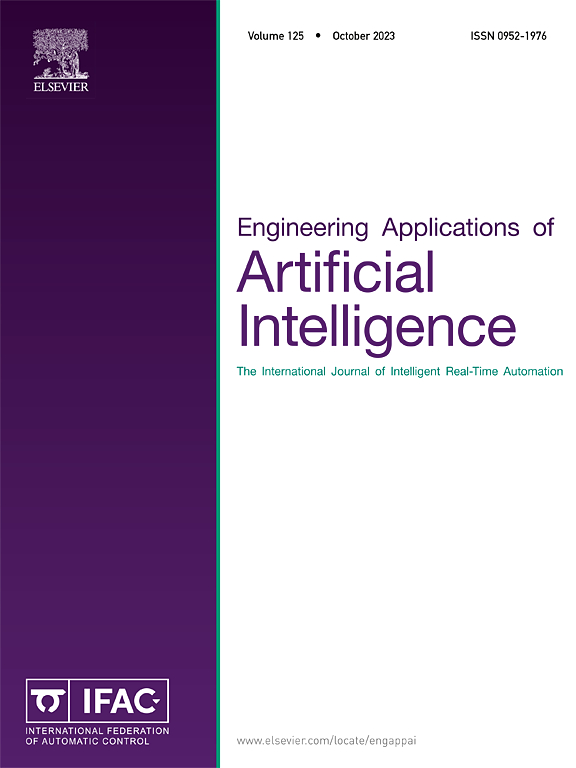Enhancing road crack detection with Neural Architecture Seeks Large Neural Network: Leveraging deep learning and Augmented Minority Over-Sampling Technique on public and custom developed datasets
IF 8
2区 计算机科学
Q1 AUTOMATION & CONTROL SYSTEMS
Engineering Applications of Artificial Intelligence
Pub Date : 2025-07-02
DOI:10.1016/j.engappai.2025.111507
引用次数: 0
Abstract
Deep neural networks for identifying road cracks have emerged as a crucial field of study, marking a significant advancement in infrastructural maintenance. The proposed research presents a novel Neural Architecture Seeks Large Neural Network for detecting road cracks, featuring 27 convolutional layers and ten modules, leveraging Softmax for classification. Initially, the custom developed dataset contained 30,283 images, expanded to 218,073 images using the Augmented Minority Over-Sampling Technique. For better comparison, only 30,350 images are utilized from this expanded data set. Similarly, the Karlsruhe Institute of Technology and Toyota Technological Institute dataset grew from 30,274 to 217,972 images after Augmented Minority Over-Sampling Technique processing. However, 30,274 images from the original dataset and 30,327 images from the Augmented Minority Over-Sampling Technique dataset have been processed. This normalization process aimed to ensure a balanced comparative study between the original and augmented datasets, minimizing differences and enhancing the reliability of results across the datasets. Utilizing a 70/30 train-test split, the network effectively classifies seven types of crack anomalies. The model achieves 83.7% and 89.8% accuracy on the original and augmented Karlsruhe Institute of Technology and Toyota Technological Institute datasets. The custom dataset reaches up to 91.0% accuracy for post-augmentation, while the pre-augmentation accuracy is 90.7%.

增强道路裂缝检测与神经架构寻求大型神经网络:利用深度学习和增强少数过采样技术对公共和自定义开发的数据集
用于识别道路裂缝的深度神经网络已经成为一个重要的研究领域,标志着基础设施维护的重大进步。提出的研究提出了一种新的神经结构寻求大型神经网络来检测道路裂缝,具有27个卷积层和10个模块,利用Softmax进行分类。最初,自定义开发的数据集包含30,283张图像,使用增强少数过度采样技术扩展到218,073张图像。为了更好地进行比较,这个扩展的数据集中只使用了30,350张图像。同样,卡尔斯鲁厄理工学院和丰田理工学院的数据集在经过增强少数派过采样技术处理后,从30274张增加到217972张。然而,已经处理了来自原始数据集的30,274张图像和来自增强少数派过采样技术数据集的30,327张图像。这一归一化过程旨在确保原始数据集和增强数据集之间的平衡比较研究,最大限度地减少差异并提高数据集之间结果的可靠性。利用70/30列车测试分割,该网络有效地分类了七种类型的裂纹异常。在卡尔斯鲁厄理工学院和丰田理工学院的原始数据集和增强数据集上,模型的准确率分别达到83.7%和89.8%。自定义数据集增强后的准确率高达91.0%,增强前的准确率为90.7%。
本文章由计算机程序翻译,如有差异,请以英文原文为准。
求助全文
约1分钟内获得全文
求助全文
来源期刊

Engineering Applications of Artificial Intelligence
工程技术-工程:电子与电气
CiteScore
9.60
自引率
10.00%
发文量
505
审稿时长
68 days
期刊介绍:
Artificial Intelligence (AI) is pivotal in driving the fourth industrial revolution, witnessing remarkable advancements across various machine learning methodologies. AI techniques have become indispensable tools for practicing engineers, enabling them to tackle previously insurmountable challenges. Engineering Applications of Artificial Intelligence serves as a global platform for the swift dissemination of research elucidating the practical application of AI methods across all engineering disciplines. Submitted papers are expected to present novel aspects of AI utilized in real-world engineering applications, validated using publicly available datasets to ensure the replicability of research outcomes. Join us in exploring the transformative potential of AI in engineering.
 求助内容:
求助内容: 应助结果提醒方式:
应助结果提醒方式:


